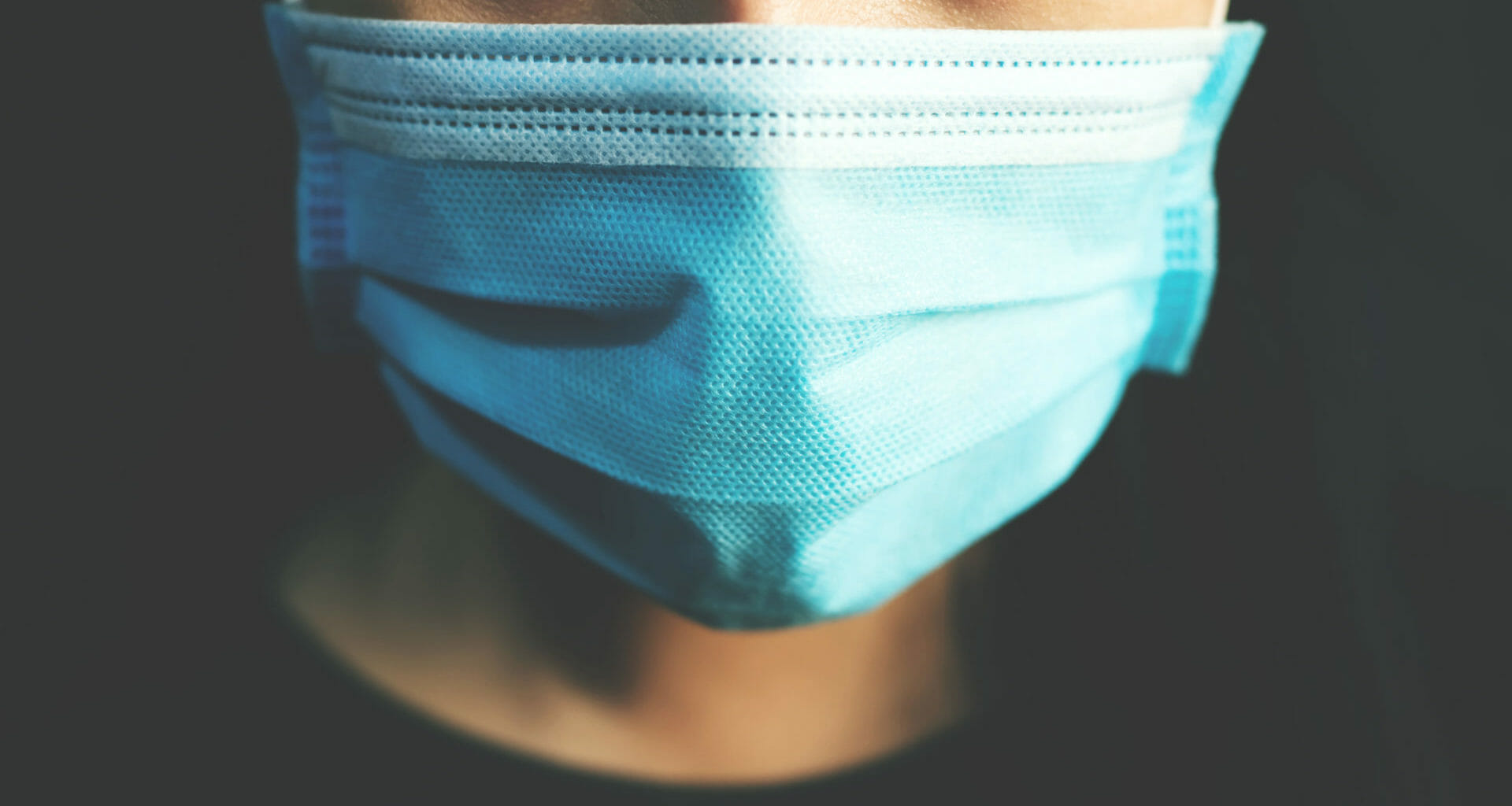Scotland’s deputy first minister and Covid-19 recovery secretary John Swinney was reported to the UK Statistics Authority this week after sharing an infographic that claimed wearing masks and physically distancing could eliminate the risk of spreading Covid-19.
The image depicted five mask-wearing scenarios and attached a percentage likelihood of transmitting Covid-19 to each. As part of that, it claimed that if an infected person wearing a mask stands six feet away from an uninfected person wearing a mask there would be zero risk of transmission.

Ferret Fact Service looked at the claim and found it Mostly False.
Evidence
According to the image shared by Swinney, if a person with Covid-19 stands close to someone else while neither is wearing a mask there is a 90 per cent chance the virus will be passed on.
The image further claims that if only the person without Covid-19 wears a mask their chance of being infected falls to 30 per cent while if only the person with Covid-19 wears a mask the risk of transmission drops to 5 per cent. If both wear masks and they stand at least six feet apart that risk drops to zero, it claims.
The image did not include any information on where the statistics had been sourced from, but appears to originate from a post on the image sharing website Imgur in July 2020.
The original post accompanying the graphic says it features “indicative numbers” from “popular social media posts”. Similar graphics showing different figures have been shared widely during the pandemic.
There is a body of scientific evidence that says masks are effective in reducing the transmission of Covid-19. If an infected person wears a mask it will reduce the number of virus-containing droplets getting into the air. If an uninfected person wears a mask it will form a barrier to reduce the likelihood of them inhaling those droplets.
How effective masks are depends on what materials they are made of and how they are used. The World Health Organization (WHO) says fabric masks should be made up of three layers – an inner one that will absorb droplets from exhaled breaths, an outer one that will repel droplets transmitted by other people and a middle layer that acts as a filter. For maximum effectiveness masks should cover the nose, mouth and chin.
The WHO says that wearing a mask will help “suppress transmission and save lives” as part of “a comprehensive strategy of measures” that includes physical distancing, hand washing and keeping rooms well ventilated. It stresses that “the use of a mask alone is not sufficient to provide an adequate level of protection against Covid-19”.
A number of studies have put figures on how much mask wearing can reduce the chances of transmitting Covid-19. One, carried out among a small cohort in China and published in BMJ Global Health, found that if both an infected and uninfected person wore a mask the likelihood of transmission reduced by 79 per cent.
A report published in medical journal The Lancet last year analysed the results of 172 studies carried out in 16 countries across six continents from the start of the pandemic. It found that physical distancing of at least one metre as well as the use of face masks and eye protection were associated with “a much lower risk of infection”. It also found that “no intervention, even when properly used, was associated with complete protection from infection”.
However, while the sentiment of the post is right, the figures present in the graphic do not appear to be based on any specific study, and have not been verified.
Scottish Conservatives health spokesperson Annie Wells said she reported Swinney to the UK Statistics Authority after he posted the infographic on Twitter. Swinney later removed the post. In a follow-up tweet he wrote he had deleted the image “as the figures in it were not verified”.
Ferret Fact Service verdict: Mostly False
Numerous scientific studies from around the world have identified that measures including mask wearing and social distancing reduce the likelihood of an infected person transmitting Covid-19 to other people. No measure reduces the risk to zero and the specific figures in the graphic are not verified.

Ferret Fact Service (FFS) is a non-partisan fact checker, and signatory to the International Fact-Checking Network fact-checkers’ code of principles.
All the sources used in our checks are publicly available and the FFS fact-checking methodology can be viewed here.
Want to suggest a fact check?
Email us at factcheck@theferret.scot or join our Facebook group.
Photo Credit: iStock/Rattankun Thongbun














